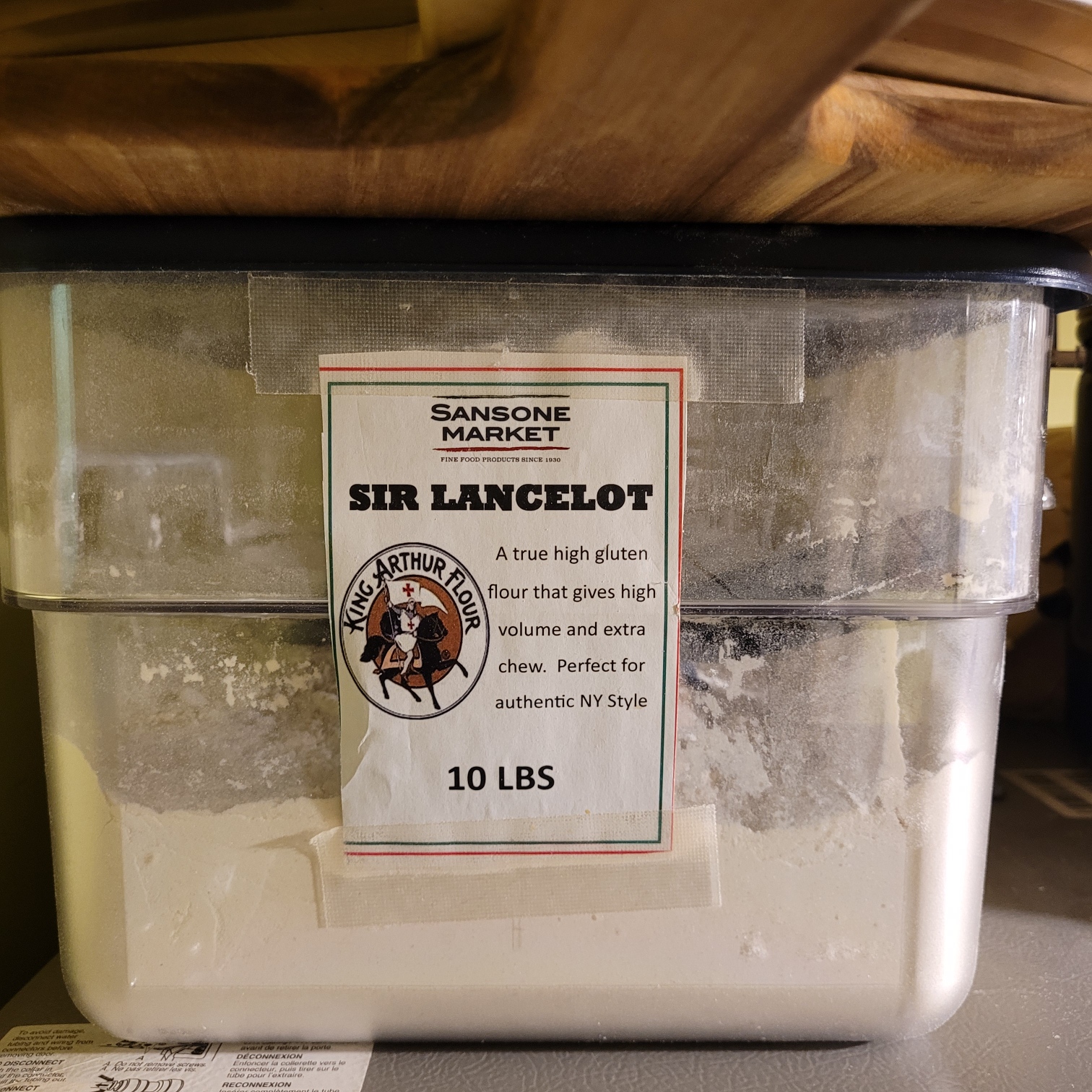
Hello, friends.
Over the last few weeks/months on and off I have been working on my Kaiser roll game. I am now pretty happy with the results I am getting from the workflow I am using. Of course, at casa Falzon we never close the book, instead with every bake we strive to advance and evolve.
With that being said, I am ready to try my hand at traditional N.Y. water bagels. A good few years ago, I used Peter Reinhart's formula to make some small batches of bagels & bialys. At the time I was very happy with the results. Looking back on the photo, I realize there was a lot of room for improvement.
That brings us to the present day. I plan on using the "Inside the Jewish Bakery" formula/workflow. My question is regarding the malt ingredient. Stanley calls for either diastatic malt syrup or powder. I feel like I want to use syrup. However, I only have non-diastatic malt syrup. I do have a good supply on hand of diastatic malt powder. My plan is to use the non-diastatic malt syrup & also use half the amount of diastatic powder. The formula calls for 3% diastatic malt I will cut that to 1.5% while still adding the 3% syrup. To be clear the formula calls for 3% either diastatic syrup or powder. My plan is to use 3% non-diastatic syrup plus 1.5% diastatic powder. Am I overthinking again? What would you do?
A. Just use the diastatic powder
B. Just use the non-diastatic syrup
C. Use both as outlined above
D. Something else
Thanks for any input. The photos are of the old Reinhart-inspired bagels some more recent bialys and related media.


I don't know the formula from "Inside the Jewish Bakery", but I've looked at many bagel recipes on line and some use the non-diastatic syrup, some use the diastatic powder. All of them seem to work.
I have always read that the heating process that renders the sprouted barley into a syrup halts the enzymatic activity, thus making all of the barley malt syrup non-diastatic. I would just pick one and work with the formula to see what happens. That way you have a baseline.
I'm interested so hear any input on the syrup. I've never found diastatic malt syrup and when I contacted Eden years ago they told my about the heating process halting enzymatic activity. Maybe there is a product available to commercial bakeries that I haven't seen.
Good luck with the bagels! Always enjoy seeing your bakes.
Dave
:) 3% should guarantee a heavy crumb, just like the bagels I know. Fluffy bagels are not bagels.
I went back to the book to check what it said and it does explicitly state diastatic, not non-diastatic, malt. For unmalted flours, recommendations for adding diastatic malt range from 0.5-9.0%. If your flour is already malted, I'd dial back on the diastatic quantity in the formula.
Diastatic syrup is available. Since the syrup you have is non-diastatic, use the diastatic powder to conform to the formula's requirements.
Please let us know the results you get. My guess is that Norm Berg worked with unmalted flours during his career as a baker, so a largish bump of diastatic malt may have been required to get the desired degree of browning during baking. It may also be that the overnight cold ferment reduced enzymatic activity, thereby preventing starch attack damage to the dough.
Paul
So, I double-checked The formula does in fact call for 1 Tbs (22g) diastatic malt at 680 g of flour. I will be doing something uncharacteristic for me, following advice. The plan now is, since I will be using malt syrup for the boil, I will not add any to the dough. As for the 3% malt powder, I will cut it down to 11 g 1.6%. Thanks to everyone for the input.
I've made Hamelman's bagels. The amount of diastatic malt is only 0.5% in the dough. The boiling solution is malt syrup @ 3%.
Try measuring 1 Tbsp of diastatic malt powder, or any other flour, it is nowhere near 22g. It is 1 Tbsp of diastatic syrup that will weigh that much.
Thanks for your input. I also hate that the malt powders are adulterated with sugar. For real, whats the point? May as well skip the malt and just add sugar.
I don’t understand why it needs to be diastatic, why not just use ND malt? Personally I use lye.
The formula asks for 3% of diastatic malt powder which you have. Then use that. It does look like a large amount, normally it will be used at 0.5-2% level, if it was pure malted marley flour, but commercial products sold as "diastatic malt powder" are highly diluted anyways, being a blend of plain wheat flour with sugar and some diastatic barley malt. kAF diastatic malt powder ingredients are:
Non diastatic malt syrup is a bread improver, it can be used in amounts up to 10-12% to flour in any recipe. 3% would bring the amount of maltose in wheat flour to normal values if on your flour package, on its nutritional label, it says that your flour has zero sugar in it. Normal values for bread flour should be 2-3% sugar. Adding non diastatic malt syrup or diastatic malt powder corrects that.
I routinely use 3-5% non diastatic syrup and use colorless or lightly colored malt syrups, like rice malt syrup, wheat malt syrup, sorghum malt syrup, etc.
Dark barley malt syrup, or dark rye malt syrup might affect the color, taste and aroma of baked goods too much if used in large amounts.